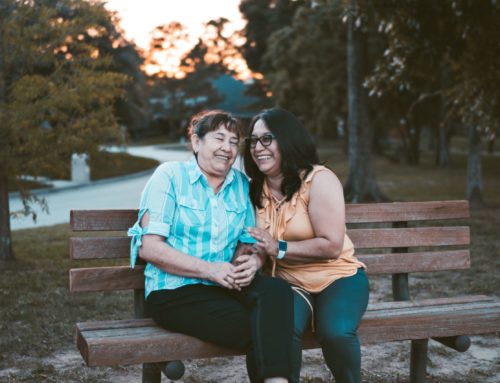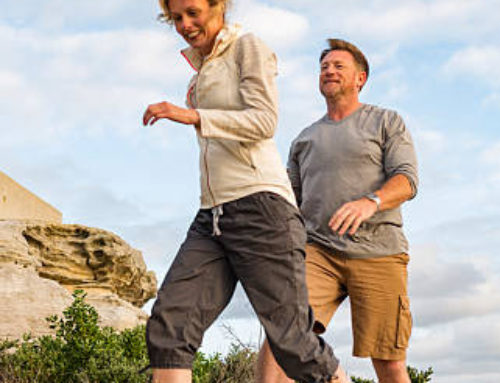The mantra about staying physically active to stay well is hard to avoid and increasingly supported by evidence. As we already know, exercise has an important role in preventing chronic illness and it also helps people deal with the effects of treatment and surgery.
But can exercise also support recovery and wellbeing after chronic illness?
This month we spoke to Valion Health Exercise Physiologist Gisela Deriard to learn more about exercising after illness and how a tailored approach makes it possible for everyone to experience the benefits of exercise no matter where they are in their recovery journey.
Gisela says the benefits of exercise for people recovering from illness include boosting your immune system, and improving heart health, increased bone and muscle strength, a reduction in fatigue and better mental health and wellbeing.
Despite all this good stuff, there’s no doubt that chronic illness makes the idea of exercise harder.
Physical and mental fatigue, aches and pain, physical changes and emotional exhaustion take a heavy toll.
It’s no surprise that taking a walk around the block feels like a step too far for many, and this is why Gisela says a program that takes into account the unique fitness levels and goals of each individual is essential.
“An exercise program should consider how to support recovery but also how to improve the person’s quality of life, and steps that need to be taken to sustain it.”
The Steps to Success
Gisela says following the plan like the one below makes it quicker and hopefully a little bit easier to start exercising again after illness.
-
Check in with your health care team
Regardless of what stage of recovery you are at, it’s helpful to get the all-clear from your health care providers before switching up your routine too much. A trusted clinician will assess your current health status and ensure you understand any limitations.
Gisela says patients at Valion Health tackle multiple parts of their health thanks to a varied team of nurses, psychologists, dietitians and exercise physiologist working together to work out the best plan of attack.
-
Slow and steady wins the race
When it comes to exercising after illness it’s important to start slow and set realistic and achievable goals. To this end, Gisela says it’s important to seek evidence-based information and not rely on mixed messaging from the fitness industry, which doesn’t always apply to people in recovery.
“There’s a misconception that you need to spend hours exercising to see benefits and it is not true. It is unrealistic and unhelpful to assume there’s a one-size-fits-all when it comes to exercise. You should start small and gradually build up.”
-
Body talks
It’s important to tune in to your body when you start exercising. Pay attention to how your body responds to activity and exercise as you undertake it and, in the hours and days afterwards. If you experience pain or fatigue above and beyond your baseline it may be a cue to dial things back a bit.
Gisela says a period of adjustment is normal and an effective exercise prescription changes in line with the physical and emotional capacity of the patient.
-
Stay the course
As with everything in life, consistency is key when it comes to exercising during or after chronic illness. Understanding from the outset that some days will feel impossible while others will feel easy will make it easier to keep going in the long term.
Gisela says working with an exercise physiologist can be really helpful for managing these ups and downs, even if it’s just in the early stages.
“When developing a program, we look at the whole person and consider what they like and what factors will contribute to them actually doing the exercises.
“Consistency is essential for seeing benefits in the long term, so our programs focus on meeting client goals and improving their quality of life, whether that’s through assisting with returning to work, going up the stairs pain-free or reducing symptoms so they can continue to enjoy their hobbies.”
-
Celebrate the wins
When it comes to exercise anything is better than nothing and Gisela says it’s important to keep the focus on what you can do rather than what you can’t.
“We need to break down the perceptions of what counts as effective exercise as it’s different for everyone.
“I always say motion is lotion and any activity that increases oxygen and blood flow to an area is beneficial.”
By adopting Gisela’s approach and acknowledging and sharing your physical activity wins you’ll be able to maintain the forward trajectory.
National Stroke Week
This week, 7-13 August, is National Stroke Week.
Stroke is one of Australia’s biggest killers. It kills more women than breast cancer and more men than prostate cancer. According to figures on the Stroke Foundation website more than 80 per cent of strokes can be prevented and staying active is one of the key preventive strategies. Exercise can also help people recover from the effects of stroke.
If you or someone you love is recovering from stroke or illness take a look at our Chronic Care Coaching Program to learn more about the support available and whether you are eligible.
Virtual Care with Valion Health
Our Health Coaching program is a practical and inspiring way to improve your health. It is a collaborative partnership between you and a trained health care professional that aims to help you to gain the knowledge, skills and confidence to be proactive in the care of your health.
We appreciate that different approaches suit different people and that everyone’s unique needs require unique consideration.
Your Valion Health Coach will take the time to understand you, your situation and experience to ensure the coaching approach is based on your individual needs. We believe our participants are experts in their own life situations, we provide direction for learning and implementation of realistic and practical change.
Learn more about Health Coaching and whether you are eligible here



